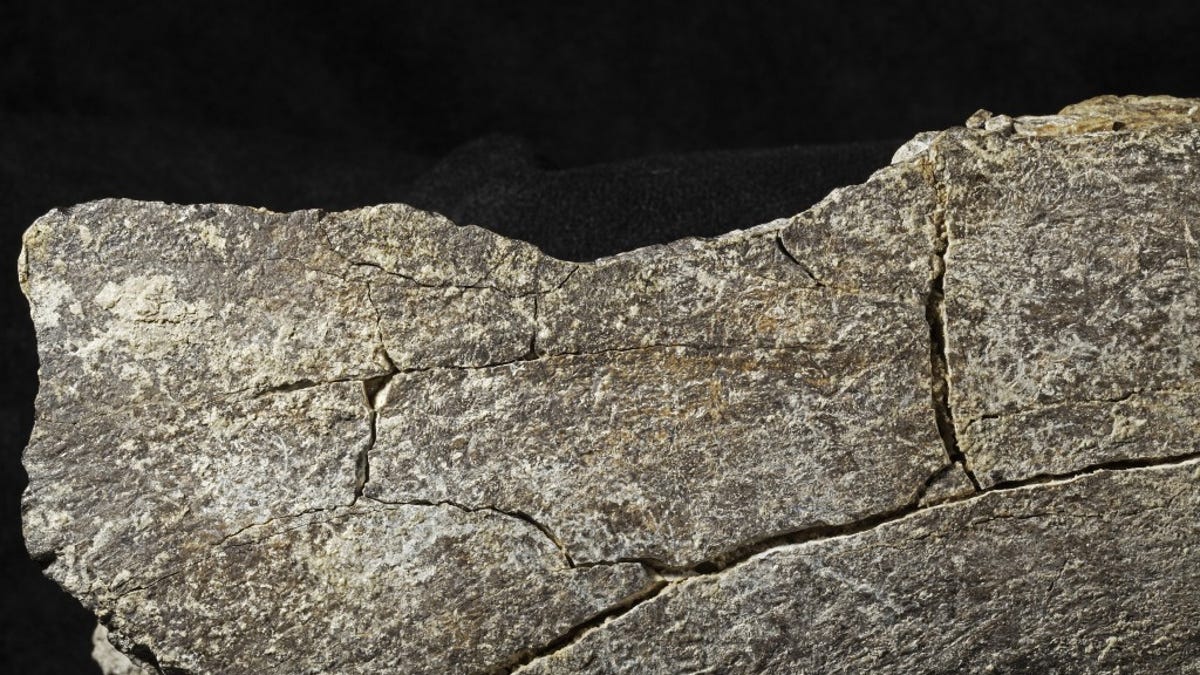Very old Mastodon bones show the 'New World' may need a new name
A California archaeological site showing signs of human activity has been dated to 130,000 years ago, much earlier than the best previous guesses at when our ancestors first set foot in North America.
The remains of a 130,000-year-old mastodon found in southern California show signs of being bashed by humans around the time of its demise. The discovery is amazing because, until now, it was believed that the first humans to migrate over an ancient land bridge from Asia to North America showed up only about 15,000 years ago.
The fossil site was discovered in San Diego County during a freeway construction project all the way back in 1992. The ancient animal's bones, tusks and teeth had been broken and buried along with large stones that appear to have been used by someone as hammers and anvils to do the breaking.
"Which poses a puzzle," explains Dr. Tom Deméré from the San Diego Natural History Museum in the below video. "The remains of this mastodon were found in a silt layer and geological processes that would deposit silt are not going to be depositing or carrying rocks of this size... what makes sense to us, although it's out there, is the hypothesis suggesting that humans brought these rocks to the site."
Deméré is a co-author of a paper on the discovery published in Thursday's issue of the journal Nature.
If the broken Mastodon bones really are evidence of a prehistoric tool-making or marrow buffet site, it would be the oldest such archaeological site on the continent by as much as 100,000 years. Radiocarbon dating of the site has not been possible, but recent technological advances made it possible to use uranium-thorium dating on multiple bone specimens to determine their age.
"This discovery is rewriting our understanding of when humans reached the New World. The evidence we found at this site indicates that some hominin species was living in North America 115,000 years earlier than previously thought," said Judy Gradwohl, president and CEO of the San Diego Natural History Museum, in a release.
But the conclusion that some broken mastodon bones are a clear indication of human activity in North America millennia ahead of the more generally understood migration schedule is being met with some skepticism.
"Until we actually find a skeleton at this site or at a site of a comparable age in the Americas, it's all open to speculation and we just don't know," says John McNabb of the University of Southampton.
In a conference call with reporters, lead author Dr. Steve Holen from the Center for American Paleolithic Research, said he's confident that the surrounding geology of the site, the placement of the apparent tools and the way the bones were broken all point to a human presence. His team went so far as to use similar rock tools on comparable elephant bones to see if they broke in the same way.
"It's understandable that it might be difficult to get your head around the nature of this evidence," added co-author Richard Fullagar from the University of Wollongong. "But Steve is absolutely right... the evidence is truly incontrovertible."
If there were human ancestors in North America ten times earlier than previously thought, it brings up many more questions. Exactly who were they? Where did they come from? Why is there a 100,000 year gap in the evidence we've found for their existence? And of course, where the heck did they go?
The scientists behind the discovery concede that they have no solid answers for these big questions just yet. But if the findings hold up, we may need to revise the accepted answer to the question of just how long we've been wandering around the "New World," which suddenly seems a little less new.
Technically Literate: Original works of short fiction with unique perspectives on tech, exclusively on CNET.
Crowd Control: A crowdsourced science fiction novel written by CNET readers.


